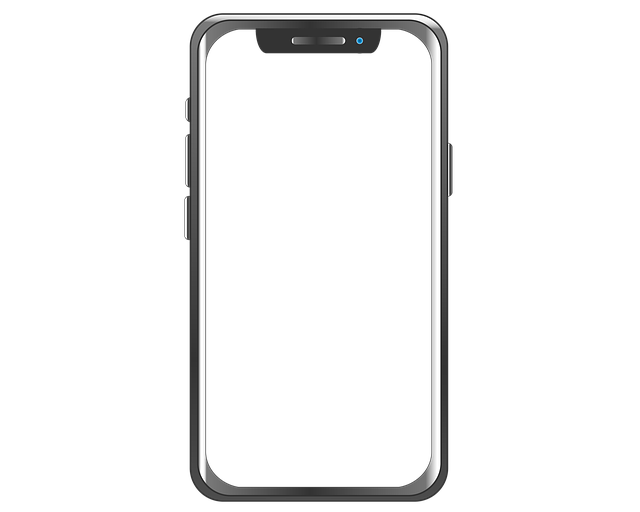In today's digital landscape, smartphones dominate internet access globally, making multi-device responsive design essential for businesses aiming to reach a broad audience. This approach ensures websites seamlessly adapt to various screen sizes, providing consistent and accessible user experiences across desktops, tablets, and smartphones. By embracing mobile-first design philosophies, companies enhance user engagement, improve SEO rankings, and cater to the growing demand for mobile internet usage, particularly in e-commerce. Tools like Google's Mobile-Friendly Test aid in optimizing web designs for diverse devices, while a strategic focus on smaller screens reduces development costs and drives better search engine results.
In today’s digital landscape, a mobile-first design approach is no longer an option—it’s a necessity. With smartphones dominating internet access, prioritizing user experience on smaller screens is crucial for business success. Adopting a multi-device responsive design strategy ensures accessibility and usability across all devices, from desktops to tablets and smartphones. This article explores the growing importance of mobile-first design, delves into common usability challenges, highlights benefits like enhanced SEO and cost savings, and provides practical tips for optimizing content and navigation for touch interfaces. By understanding these principles, businesses can create engaging experiences that cater to a broad audience.
- The Growing Importance of Mobile-First Design
- Understanding Mobile Usability Challenges
- Benefits of a Multi-Device Responsive Design
- Adapting Content for Smaller Screens
- Optimizing Navigation for Touch Interfaces
- Tools for Assessing Mobile Compatibility
- Cost Savings with Mobile-First Approach
- Impact on SEO and User Engagement
The Growing Importance of Mobile-First Design

In today’s digital era, the ubiquity of smartphones has drastically altered how users interact with the internet. With over 5 billion mobile phones in use globally, and smartphone ownership surpassing desktop usage in many regions, designing for a mobile-first approach is no longer an option but a necessity. This shift demands that websites be multi-device responsive, seamlessly adapting to various screen sizes, from large tablets to smaller cell phones.
Adopting a mobile-first design philosophy ensures that the user experience remains consistent and accessible across all devices. It involves creating adaptive web designs that prioritize content readability, intuitive navigation, and touch-friendly interfaces, taking into account the unique interaction patterns of smartphones. This strategic approach not only enhances user engagement but also significantly impacts search engine optimization (SEO), as mobile-optimized websites enjoy higher rankings on platforms like Google. For e-commerce businesses in particular, Mobile web design for E-commerce, considering the growing number of customers accessing online stores via their smartphones, is crucial to capturing a broader audience and driving sales.
Understanding Mobile Usability Challenges

The shift to mobile as the primary device for internet access presents unique challenges when it comes to usability. Users expect seamless experiences across various devices, from smartphones to tablets and desktops. This has led to a growing demand for multi-device responsive design. One of the primary hurdles is adapting content and layout to accommodate smaller screens while maintaining readability and functionality. Traditional web designs, often cluttered with complex elements, may not translate well to mobile interfaces.
Additionally, developers must consider the limitations of touch interactions. Smaller screen sizes require larger buttons and simplified navigation menus for ease of use. Professional Mobile Web Solutions involve creating Responsive Website Design that fluidly adjusts to different devices without compromising aesthetics or usability. By prioritizing these considerations, web designers can ensure a consistent and positive user experience across all platforms, fostering higher engagement and satisfaction.
Benefits of a Multi-Device Responsive Design

A multi-device responsive design offers a seamless user experience across diverse platforms, from smartphones to desktops and everything in between. This strategy ensures that your website’s layout, content, and features adapt gracefully to fit various screen sizes and resolutions, providing an optimal viewing experience regardless of the device being used. By embracing this approach, businesses can cater to a broader audience, as users expect websites to function flawlessly on their preferred devices.
Implementing a multi-device responsive design also streamlines the development process. With a single codebase that adapts to different screens, web designers and developers save time and resources compared to maintaining separate versions for each device type. This efficiency is particularly beneficial for startups with limited budgets, allowing them to create robust and adaptable Mobile Web Solutions while keeping costs low through Expert Mobile Web Design practices. Moreover, responsive web design aligns with modern search engine optimization (SEO) best practices, as Google and other major search engines prioritize mobile-friendly websites in their rankings, further enhancing online visibility.
Adapting Content for Smaller Screens

In adopting a mobile-first web design approach, content adaptation for smaller screens is paramount. This involves simplifying and reorganizing information to fit compact real estate while maintaining readability and comprehension. Essential elements are prioritized and presented in a hierarchical structure that guides users through the content easily. Visuals play a crucial role; they need to be optimized for reduced screen sizes without compromising quality. Responsive images, where their size adjusts dynamically based on the device, ensure fast loading times and an optimal viewing experience.
Moreover, mobile-first web design encourages the use of touch-friendly interfaces. Buttons are made larger for easier tapping, menus are simplified, and navigation is streamlined to accommodate the unique constraints of smaller screens. This focus on usability ensures that users can interact with the website intuitively, enhancing their overall experience. Such adaptations not only cater to the growing demand for multi-device responsiveness but also align with mobile web optimization best practices, ultimately contributing to better SEO rankings and increased user satisfaction.
Optimizing Navigation for Touch Interfaces

In the realm of mobile-first design, optimizing navigation for touch interfaces is paramount. As smartphones become the primary gateway to the internet, user experiences on smaller screens must be seamless and intuitive. This involves simplifying navigation menus, ensuring buttons are large enough for easy tapping, and organizing content hierarchically for quick access. Local Mobile Web Designers often employ these strategies to create user-friendly mobile websites that cater to a diverse audience.
A multi-device responsive design approach is key to achieving this. By designing with flexibility in mind, web developers can seamlessly transition layouts and functionalities across various devices, from tablets to desktops. This not only enhances the overall user experience but also allows for the creation of custom mobile-friendly websites that are both visually appealing and easy to navigate, ultimately boosting user satisfaction and search engine optimization (SEO).
Tools for Assessing Mobile Compatibility

Assessing mobile compatibility is a crucial step in ensuring your website performs optimally across various devices. One of the most popular tools for this purpose is Google’s Mobile-Friendly Test, which provides an easy way to verify if a webpage meets the criteria for a positive user experience on mobile platforms. This free tool analyzes the content, layout, and functionality of your site, offering valuable insights into areas that need improvement.
Additionally, developers can leverage advanced testing platforms and browser developer tools to simulate different screen sizes and device types. These tools allow for detailed examination of a website’s responsiveness, helping designers and developers refine their multi-device responsive design strategies. By utilizing these resources, businesses can ensure they deliver the best possible Cross-Device Website Design, enhancing user satisfaction through optimal Mobile Site Development while also boosting their online visibility via Responsive Web Solutions for Businesses.
Cost Savings with Mobile-First Approach

Adopting a mobile-first design approach offers significant cost savings in affordable web design. By prioritizing smaller screens and creating a multi-device responsive design, developers can build one flexible layout that seamlessly adapts to various devices—from smartphones to tablets and desktops. This reduces the need for separate, device-specific designs, eliminating redundant development and maintenance costs.
Moreover, focusing on mobile usability from the outset streamlines the process of enhancing the website for larger screens. A well-optimized mobile design ensures that any subsequent adaptations are more manageable and less resource-intensive. This strategic approach not only cuts initial development expenses but also future maintenance costs, making it a cost-effective solution for businesses aiming to provide a consistent, high-quality user experience across all platforms with their Professional Mobile Web Design and Responsive Web Solutions for Businesses.
Impact on SEO and User Engagement

The adoption of a mobile-first web design strategy has profound implications for both search engine optimization (SEO) and user engagement. By prioritizing smaller screens and touch interfaces, developers create a multi-device responsive design that caters to the diverse needs of users across various devices. This approach not only ensures accessibility but also significantly boosts SEO rankings. Search engines, notably Google, favor mobile-friendly websites in their search results, making it easier for optimized sites to attract organic traffic. Users appreciate seamless experiences on all platforms, leading to higher engagement and satisfaction when they interact with a website that effortlessly adapts to their device. This positive user experience can translate into increased time spent on the site, lower bounce rates, and improved conversion metrics—all valuable signals that search engines use to rank websites higher.
Engaging users across multiple devices also opens opportunities for local businesses to connect with their target audience through local mobile web designers who specialize in cross-device website design. A well-designed, mobile-first site can enhance brand visibility and foster stronger relationships with customers, encouraging repeat visits and word-of-mouth recommendations. This holistic approach ensures that the online presence not only looks good on desktops but also performs exceptionally on smartphones, tablets, and other portable devices, solidifying a business’s digital footprint in today’s mobile-centric world.
